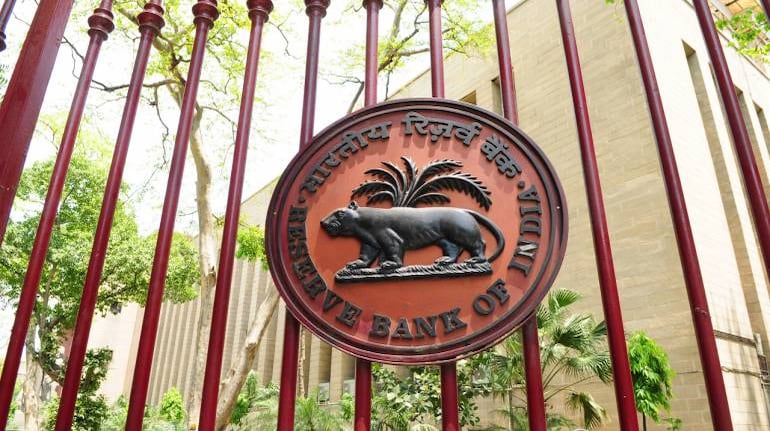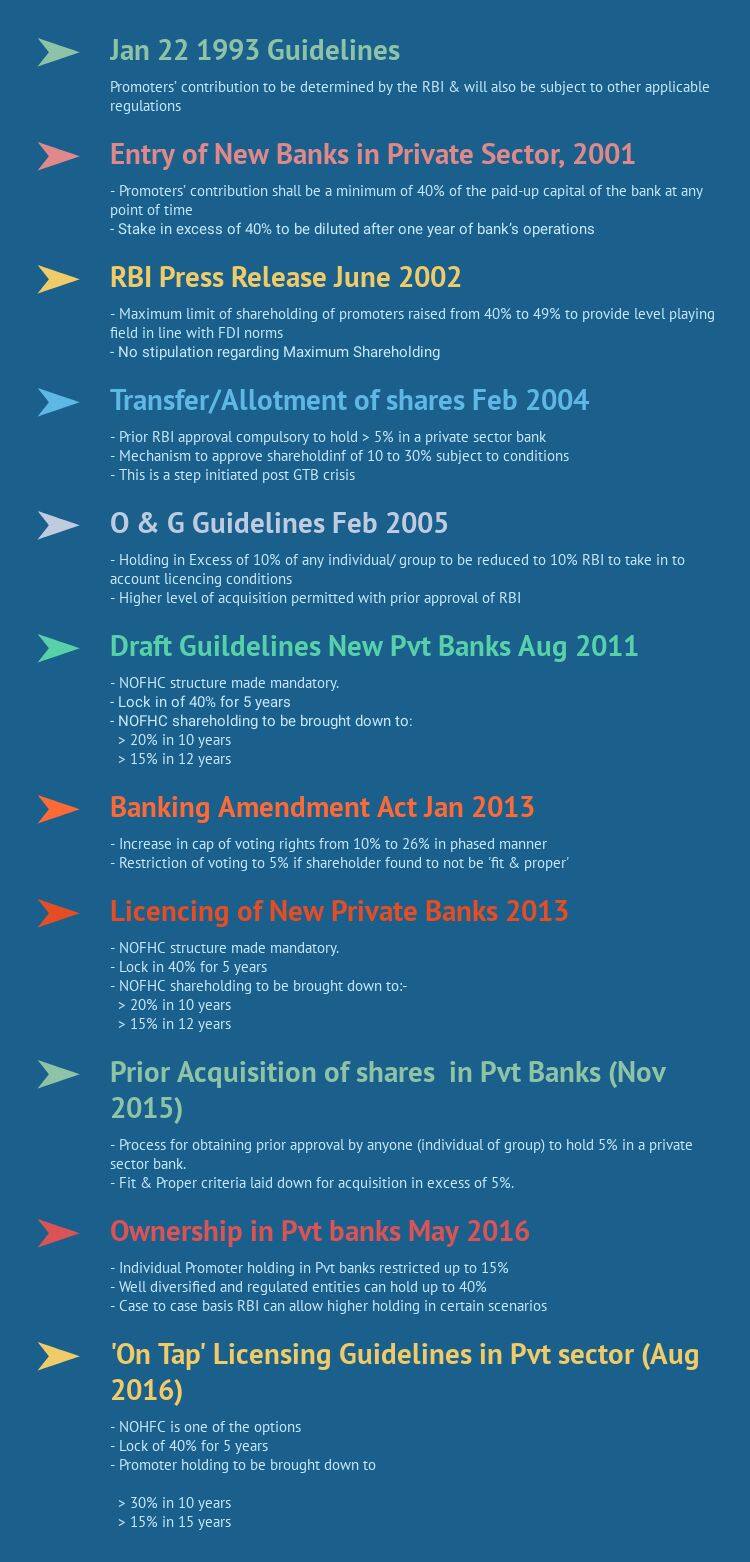



The Reserve Bank of India (RBI) has rejected Kotak Mahindra Bank’s proposal to dilute promoter holding through an issue of non-convertible perpetual non-cumulative preference share (PNCPS). Kotak’s move has triggered a debate, which pivots on two issues.
First, whether Kotak did the right thing. Second, whether the RBI policy on ownership of banks is irrational and flawed and needs a relook. The focus of this essay is on second issue. Hopefully, the analysis will also answer the first issue.
As a regulator, the RBI has the job to ensure that a bank’s stakeholders are not put to risk, the bank is not spreading systemic risk, and it’s following all regulations. It is through this lens we will analyse the RBI policy.
Does concentration of ownership have anything to do with risks and governance?There is no empirical data to establish any causality between risk and governance failure with ownership. Presently with voting rights capped at 26 percent, higher ownership is better as economic risks are higher based on actual ownership.
Further, non-promoters get disproportionately higher voting rights. In Kotak’s case, promoters are holding 30 percent but can vote only on 26 percent. Therefore, any ownership-related risk of management is automatically taken care by capping voting rights. Board appointments are almost controlled by the RBI and Kotak has only one promoter director on the Board compared to three each in Axis Bank, Laxmi Vilas Bank and Karur Vysya Bank, and two each in HDFC Bank and IndusInd Bank.
The last failure of a bank was Global Trust Bank (GTB) in 2004. Now, 14 years later, we are much smarter, better regulated and better informed.
In GTB, the promoters had almost 40 percent equity in 1999. There was no regulation then to dilute, yet the promoters were selling shares and their stake came down to almost 20 percent in 2004, when the bank failed. Therefore, it was not high ownership which caused failure, but dilution of equity which preceded failure.
That was the red signal which the RBI and everyone missed. Despite a reduction in equity, the promoters wielded disproportionate board control and pursued other businesses where potential conflict of interest could have existed.
Conflict in any form is the first source of governance failure and increased risk. Conflict emanates from varied business interests and where one tries to advance the interests of one business at the cost of other. In the case of Bank of Rajasthan (BOR), there were allegations that promoter-related entities were beneficiaries of bank credit from the lender.
In the case of Kotak, as per publicly available information, its promoter Uday Kotak does not have any other business. If the Kotak promoters are forced to dilute equity, one will be forcing a conflict of interest situation.
At current prices, if Kotak promoters sell 15 percent equity, they will net Rs 37,000 crore. Wherever, they deploy this money, it will create conflict for the current business. Not only that, it is likely that the bank’s premium valuation will be lost as the market sees reduced interest of promoters with added conflict. That makes the bank a shade riskier and something, which the RBI surely doesn’t want.
Dilution of equityApart from a secondary sale, the promoter equity can be diluted by a fresh issue of equity and acquisitions. Both are neither practical nor going to be value accretive to stakeholders and might result in greater risks.
If the fresh equity route is raised, at current market prices, the bank will raise around Rs 2.47 lakh-crore, increasing its net worth to Rs 2.84 lakh-crore, an almost eight times jump from its present net worth, overtaking HDFC Bank and the State Bank of India (SBI). It will catapult its capital adequacy ratio from 18.22 percent to more than 100 percent. This route has multiple problems. First, which investor has this kind of money? Note that the Securities and Exchange Board of India (SEBI) data shows that total funds mobilised through public issue, rights issue, qualified institutional placements (QIPs) and preferential offer in 2017-18 were less than Rs 2.25 lakh-crore.
Can Kotak make that kind of issue? Not unless it chooses to sell it to an international bank. That too appears difficult in current scenario. With a sudden influx of huge capital, its return ratios will be depressed, causing more risk to shareholders.
The other way to reduce promoter equity is to merge or acquire other banks. In such a case, it will have to either merge with all three of ICICI, RBL and Karur or Axis and Yes Bank, or merge with all private sector banks excluding HDFC, ICICI, Axis and IndusInd. Such a route is neither practical, nor will it create value for shareholders.
Governance metricsGood governance is the sum total of countless actions. At the end, it is reflected in the perception of stakeholders, and financial and operational results. It is here that Kotak scores over its peers. It commands the highest price-earnings ratio, one of the lowest bad loans ratio, a very high tier-I capital to risk assets ratio and one of the lowest contingent liability to net worth ratio. It has had no regulatory action against it which can put it in a risky category. Therefore, what objective does the dilution of promoter’s equity will achieve?
| Bank | Contingent Liabilities/ Networth Ratio | Tier-I CRAR |
| Axis Bank | 11.58 | 13.04% |
| ICICI Bank | 12.62 | 15.92% |
| Yes Bank | 22.58 | 13.20% |
| HDFC Bank | 8.23 | 13.20% |
| Kotak Mahindra | 5.47 | 17.56% |
| SBI | 5.30 | 10.02% |
Regulations must be framed to achieve desired objectives and implementation must result in their achievement. Many a times, regulations do not keep pace with changing times and at the end become counterproductive. That appears to be the case here.
Since the law is there, it has to be implemented. However, a forced dilution is certainly going to be counterproductive and will cause loss to stakeholders and elevate risks to an otherwise efficient bank.
Unfair dictateIn this context, it is important to trace the history of Kotak Bank and ownership norms. When the bank was applied for license under the 2001 guidelines, it was required to have minimum 40 percent promoter’s equity. Holdings over 40 percent were to be diluted in a year.
In 2002, the guidelines changed, and the maximum promoter limit was increased to 49 percent in line with FDI norms and to create a level playing field. The licence condition allowed promoters to hold 49 percent equity. Thereafter, post the GTB crisis, in 2005, the policy changed and required dilution to 10 percent.
However, the RBI would permit a higher level of equity taking into account licencing condition, which in the case of Kotak was a minimum 40 percent. This lower limit of 10 percent in all likelihood was linked to maximum voting rights capped at 10 percent as per the Banking Regulation Act. This kneejerk reaction post the GTB crisis linked failure to higher promoter equity.
In 2016, the RBI capped individual promoter holding to 15 percent, however, the RBI could permit higher holding in certain scenarios. Well-diversified holding companies are allowed 40 percent. In 2016, on-tap licensing allowed reduction of an individual promoter’s equity to 15 percent in 15 years.
Between 2013- 2016, the voting rights cap increased from 10 percent to 26 percent in phased manner for fit and proper persons. With voting rights increased to 26 percent there is no rationale to keep holding limit to 15 percent. It must also be questioned why a non-operating financial holding company structure is better when you cannot hold an individual accountable.
Ownership norms have been volatile. When Kotak started, it required a minimum 40 percent promoter shareholding. All over regulations are grandfathered, especially licencing conditions. Should the RBI not allow it, in all fairness, 40 percent promoters’ equity as it was a licensing condition? Unless of course, the RBI can demonstrate in a cogent manner, the logic for reduction and risks that higher equity may cause to the bank, its stakeholders, and system. Regulations cannot be made for individual cases but individual cases can be examined as well.
The Insurance Regulatory and Development Authority (IRDA) wants minimum 50 percent to be held by a promoter in an insurance company, and the SEBI allows 100 percent ownership in mutual fund asset management companies (AMCs). It is only in stock exchanges, that a single owner is not allowed to hold over 5 percent equity, as they are public utilities and are not commercial enterprise like banks.
In non-banking financial companies (NBFCs), which are also large financial institutions, promoters can hold any amount of equity. The SEBI takeover code recognises control only after 25 percent or majority in the board of directors. Insurance is much longer-term product than mutual funds (MFs) or banking products. If the control risk requirement is 50 percent promoter holding in insurance, what is the logic for banks to limit to 15 percent?
In the latest guidelines, a well-diversified holding company can have 40 percent in bank. Practically, even well-diversified companies are eventually controlled by their largest shareholders; hence, such a holding structure encourages disproportionate control compared to financial risks that an individual takes.
There are NBFCs whose market cap is more that Rs 1 lakh-crore, yet they are not converting to a bank. Why? The answer is obvious. No one wants to let go of a successful creation.
ConclusionIn the case of Kotak, there are no signs of governance failure or ill-effects of high promoter holding. On the contrary, looking at the negative impact of dilution, loss to stakeholders, increased risk etc., there appears to be no case for forced dilution, unless the RBI wants to prove its supremacy as regulator.
The current ownership norms are irrational, dated, arbitrary, discretionary and violates the original licensing conditions. If implemented, they will cause losses to all stakeholders, force a conflict of interest situation and may result in a successful institution becoming foreign owned or losing value due to regulatory action.
(The author is the co-founder and managing director of Stakeholder Empowerment Services and a former executive director at SEBI. Views are personal.)Discover the latest Business News, Sensex, and Nifty updates. Obtain Personal Finance insights, tax queries, and expert opinions on Moneycontrol or download the Moneycontrol App to stay updated!
Find the best of Al News in one place, specially curated for you every weekend.
Stay on top of the latest tech trends and biggest startup news.